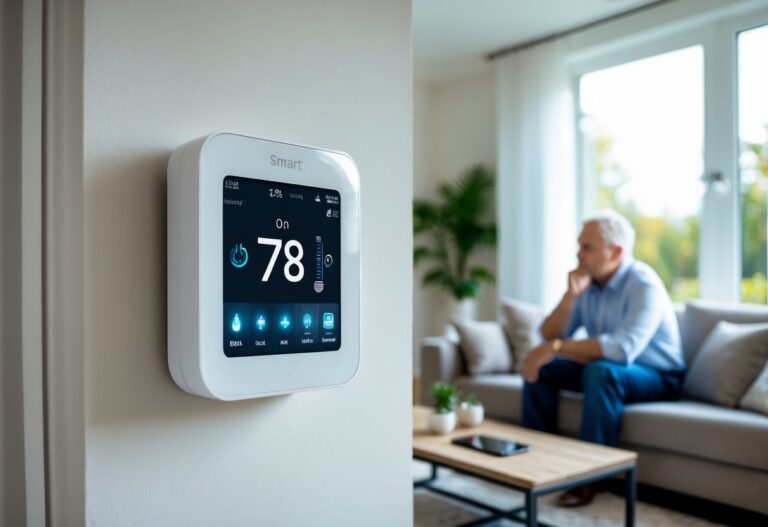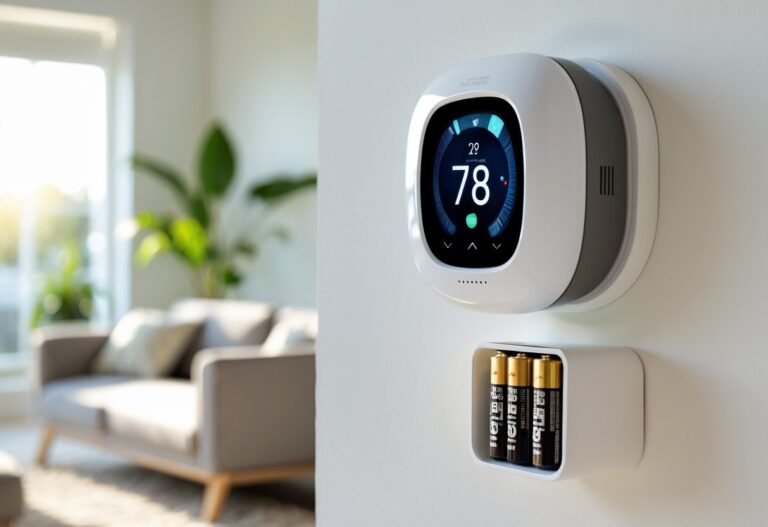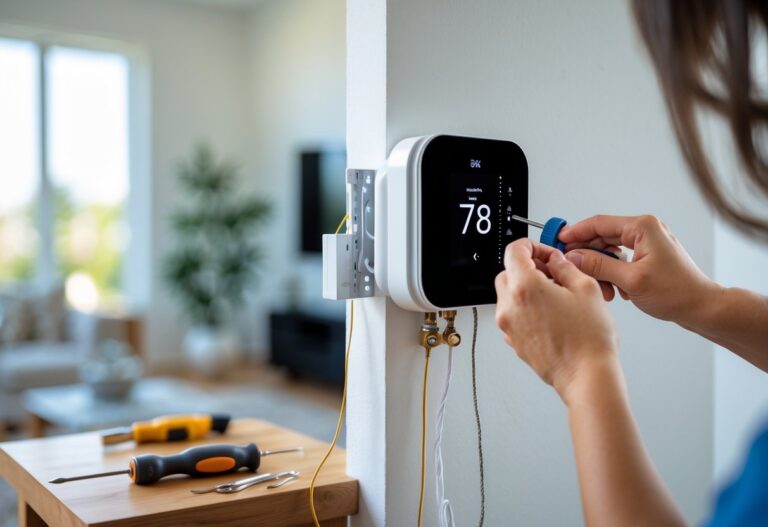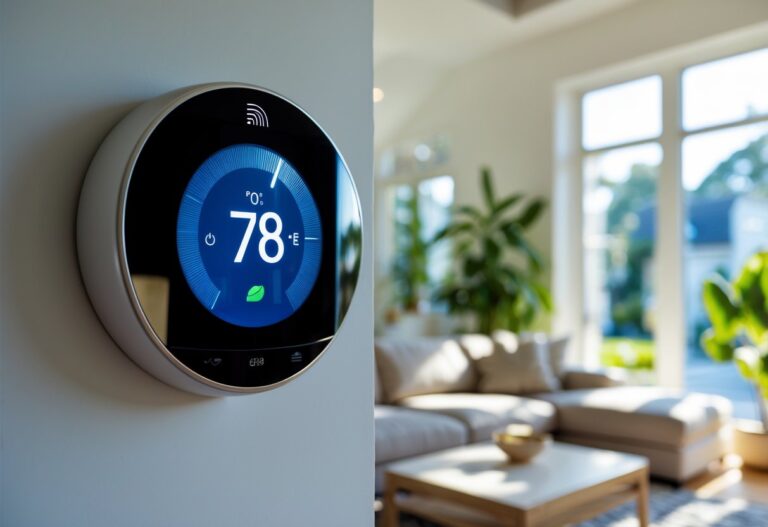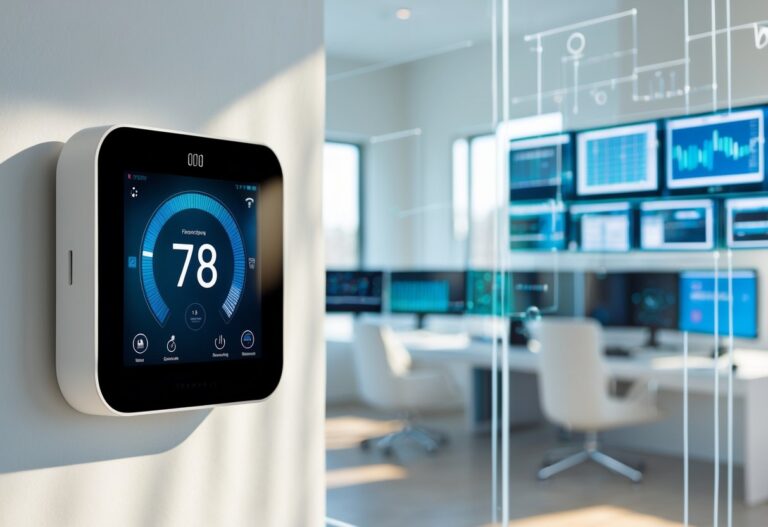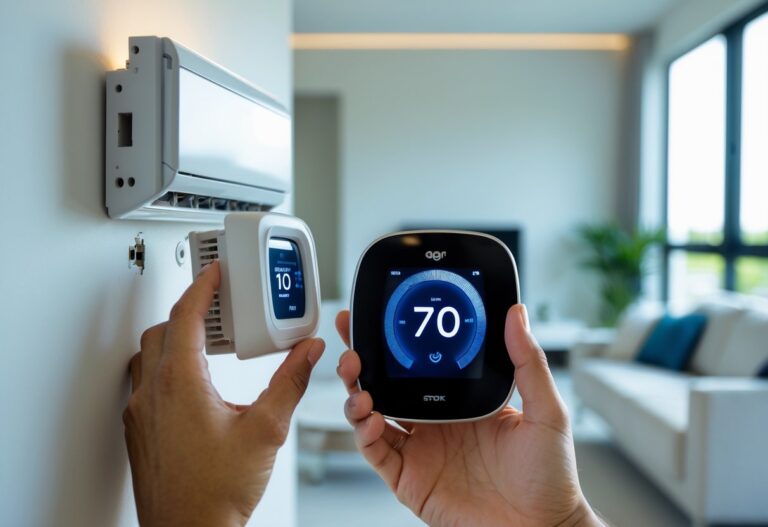If you’re trying to choose between the Ecobee and Ecobee Lite smart thermostats, you might wonder which one actually suits your home and lifestyle best. With both models looking almost the same, it can be confusing to know what sets them apart or if the extra cost is worth it. The main difference is that the Ecobee Smart Thermostat offers more advanced features and greater smart home compatibility than the Ecobee Lite.
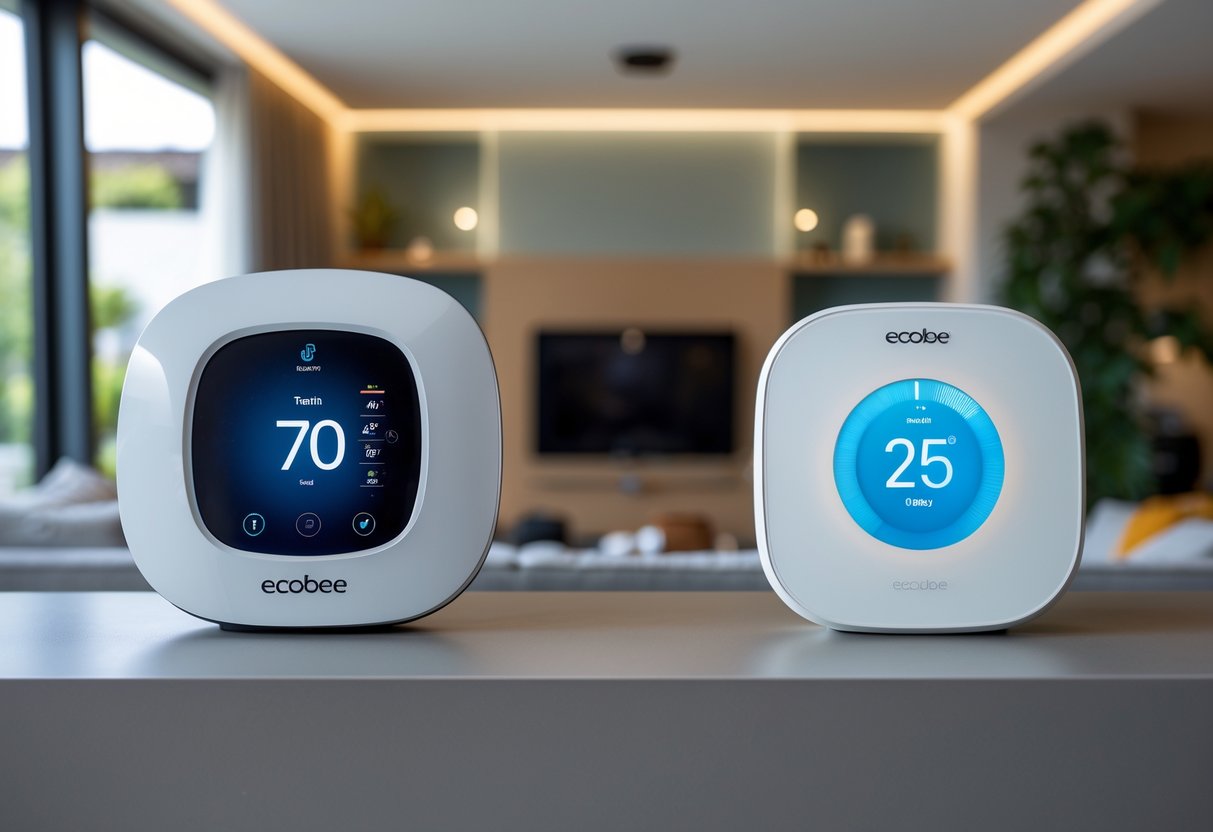
You’ll want to know how each thermostat works with the latest smart devices and whether their features align with your needs. If comfort, technology, and saving energy are important to you, knowing the details can help you avoid buying the wrong model. The right choice can make your home smarter and your life easier.
Key Takeaways
- Ecobee and Ecobee Lite have clear differences in features and smart functions.
- Device compatibility and easy setup matter for how well each will work in your home.
- Extra technology on the main Ecobee brings added value for some users.
Core Differences Between Ecobee and Ecobee Lite
Ecobee smart thermostats have distinct differences in design, features, and included accessories. Your decision depends on which options suit your home setup and desired level of smart control.
Design and Display
Both Ecobee and Ecobee Lite use a sleek, modern design with a glass touchscreen. The full Ecobee SmartThermostat comes with a slightly larger and more responsive color display compared to the Ecobee3 Lite.
You can control both models through their touch screens, but the SmartThermostat features higher clarity and brightness. This makes it easier to read temperature settings and alerts. Voice control via built-in Alexa is available only on the Ecobee SmartThermostat, while Ecobee Lite needs an external device for similar functionality.
Side-by-side comparison:
| Model | Display Type | Voice Control Built-In |
|---|---|---|
| Ecobee Smart | Large color glass | Yes (Alexa built-in) |
| Ecobee3 Lite | Glass touchscreen | No |
Included Accessories and Room Sensors
A major factor is what comes in the box. The Ecobee SmartThermostat includes at least one wireless SmartSensor (room sensor). These sensors help manage comfort and energy efficiency by detecting temperature and occupancy in different rooms.
Ecobee3 Lite does not include any room sensors in the standard package. However, you may buy them separately if you want the ability to control temperatures in multiple rooms.
If you want advanced temperature balancing for better comfort, the included SmartSensor with the SmartThermostat makes a noticeable difference. The Lite is more of a starter model and is best suited for single-room monitoring unless you add more sensors yourself.
Feature Comparison
Ecobee SmartThermostat supports more smart home platforms and functions than Ecobee Lite. The SmartThermostat works directly with Alexa, Apple HomeKit, Google Assistant, SmartThings, and more. It can even make phone calls and stream music using its built-in speaker.
Ecobee3 Lite covers most of the basics like app control, scheduling, and integration with HomeKit or Google Assistant, but lacks built-in voice control and media features. Both models allow you to program schedules and monitor energy usage, but only the SmartThermostat has the newest performance and energy-saving algorithms.
Key features:
- Voice assistant: Built into SmartThermostat, not Lite
- Room sensors included: Yes for SmartThermostat, no for Lite
- Smart home integration: Broader on SmartThermostat
If you need more smart home features or want voice control in the thermostat itself, the SmartThermostat is the better option. If you only need essential smart thermostat control, the Ecobee3 Lite covers the core needs at a lower price.
Smart Home Integration and Compatibility
Both the Ecobee and Ecobee Lite are designed to work in modern smart homes. They each offer useful ways to control your home’s temperature, but have differences in compatibility, integration, and control features.
Voice Control Capabilities
The Ecobee Smart Thermostat has a built-in speaker, so you can use Amazon Alexa directly from the device for hands-free control. You can ask Alexa without an extra smart speaker. It also lets you play music, set timers, and control other smart home devices.
By contrast, Ecobee Lite doesn’t include built-in voice control. To use Alexa, Google Assistant, or Apple HomeKit, you need a separate smart speaker or hub. Both models respond to voice commands through these platforms, but only the regular Ecobee gives direct Alexa access.
If native voice control is important for your setup, the standard Ecobee will deliver a more convenient, seamless experience. The Lite model still works with all major assistants but relies on other devices.
Supported Smart Home Ecosystems
The full Ecobee Smart Thermostat supports more smart home ecosystems out of the box. It works with Apple HomeKit, Amazon Alexa, and Google Assistant. It can also connect with Samsung SmartThings and other systems like Logitech Harmony and IFTTT, making it easy to include in complex home automation setups.
Ecobee Lite is also compatible with HomeKit, Alexa, and Google Assistant, but may not offer as deep integration with less common systems or accessories. While both can control your heating and cooling, the regular Ecobee offers more options for linking with other smart products, like the Ecobee SmartCamera.
See the table below for key compatibility differences:
| Ecobee | Ecobee Lite | |
|---|---|---|
| Alexa (built-in) | Yes | No |
| HomeKit | Yes | Yes |
| Google Assistant | Yes | Yes |
| SmartThings | Yes | Yes |
| Logitech Harmony | Yes | Limited |
Mobile App and Remote Access
Both Ecobee and Ecobee Lite use the Ecobee app for remote control. You can change your home’s temperature, set schedules, or review history using a smartphone or tablet. App features are nearly identical on both models.
You’ll get push notifications, vacation mode, and energy reports from either device. Wi-Fi is required for remote access, but you do not need Bluetooth. With either thermostat, you can manage your home’s comfort from just about anywhere.
If you want full use of app-based features and the same mobile experience, both models provide it. Differences are found more in hardware integrations than in their app experience.
Installation and Compatibility Considerations
Ecobee and Ecobee Lite thermostats share similar installation steps, but there are differences in wiring needs, HVAC system support, and the type of help you can expect if you run into problems. Understanding these details will help you pick the device that best fits your home and comfort needs.
Wiring Requirements and C Wire
Both Ecobee and Ecobee Lite usually require a common wire (C wire) for power. This wire provides continuous power so the device can run features like Wi-Fi and displays. If your old thermostat does not have a C wire, both models come with a Power Extender Kit (PEK), which lets you install the thermostat without new wiring.
Using the PEK is simple, but it does require you to open your HVAC system and connect a few wires. For older homes without a C wire, this is often the easiest solution. Make sure your system is compatible with the Power Extender Kit before starting the installation.
Tip: Always turn off your HVAC system power before beginning installation to stay safe.
HVAC System and Accessory Support
The standard Ecobee model works with a wider range of heating and cooling systems. It supports most conventional HVAC equipment and can also control extra devices like humidifiers, dehumidifiers, and ventilators. This gives you more control over your home’s comfort and air quality.
Ecobee Lite supports many basic HVAC setups, such as heating, cooling, and heat pumps, but it does not natively control extra accessories like humidifiers or dehumidifiers. If you need advanced ventilation or moisture controls in your home, the regular Ecobee will be the better fit. Always check your specific HVAC system’s wiring and features before buying.
Customer Support Experience
Ecobee offers online resources including step-by-step guides, installation videos, and a compatibility checker tool. Both thermostats come with access to customer support by phone, email, and chat. Wait times and support quality are generally reported as positive, but some users find installation help more helpful for Ecobee’s advanced features.
If you run into issues with wiring, compatibility, or adding accessories, Ecobee’s support can walk you through troubleshooting. For more basic setups, most users report Ecobee Lite is quick to get up and running with little need for extra help. Complex installations, especially with extra HVAC devices, may take more time and guidance.
Energy Efficiency and Advanced Smart Features
When comparing the Ecobee and Ecobee Lite thermostats, you’ll notice important differences in energy savings, temperature management, and smart home integration. Features like motion sensors, scheduling, and security functions set these models apart and can impact your daily comfort and utility costs.
Energy Savings and Usage Tracking
Both Ecobee and Ecobee Lite models help you save on energy bills by making your heating and cooling more efficient. The main Ecobee model offers eco+ features. These can analyze your schedule, local weather, and energy prices, then make automatic adjustments to reduce energy use.
You can track your energy usage directly from the Ecobee app. The standard Ecobee gives more detailed reports than the Lite. This can help you spot trends and change habits to save money on utility bills.
If you want deeper insights or tools that boost energy efficiency, the main Ecobee is the better choice. It’s designed to give you extra control and visibility over your energy usage.
Temperature Control and Scheduling
Ecobee offers precise temperature management options. Both the Ecobee and Ecobee Lite support 7-day scheduling, so you can set up different temperatures for every day of the week.
The main Ecobee model features Smart Recovery, which learns how long it takes to heat or cool your home so it feels comfortable when you need it. You also get a simple Vacation Mode to save energy while you’re away.
Follow Me and Follow Me Plus features, found on the regular Ecobee, use information from sensors to keep your most-used rooms comfortable. The Ecobee Lite has basic scheduling, but it lacks some of these automated features.
Motion and Occupancy Sensors
The regular Ecobee thermostat comes with built-in motion and occupancy sensors, while the Ecobee Lite leaves these out or makes them optional accessories. These sensors detect when someone is in a room and can adjust the temperature automatically.
This is helpful for cutting down on energy costs since your thermostat won’t heat or cool empty rooms. The Home and Away function also means your system can shift to an energy-saving mode if nobody is detected at home.
In the main Ecobee, Follow Me takes input from several sensors to make sure your most-used areas stay comfortable, adjusting the system in real time. The Lite does not support this advanced sensor-driven control out of the box.
Home Security and Monitoring Features
Some Ecobee models, but not the Lite, include smart home security features. You can connect the main Ecobee with a home security system and pair it with devices like the Ecobee SmartCamera for added monitoring.
These features can alert you to problems like doors being opened or unexpected motion, helping you keep an eye on your home. With this security integration, your thermostat is no longer just a comfort device—it also offers extra peace of mind.
The Ecobee Lite lacks most built-in home monitoring features. If home security is important to you, you’ll want to choose the main Ecobee for these advanced smart options.
